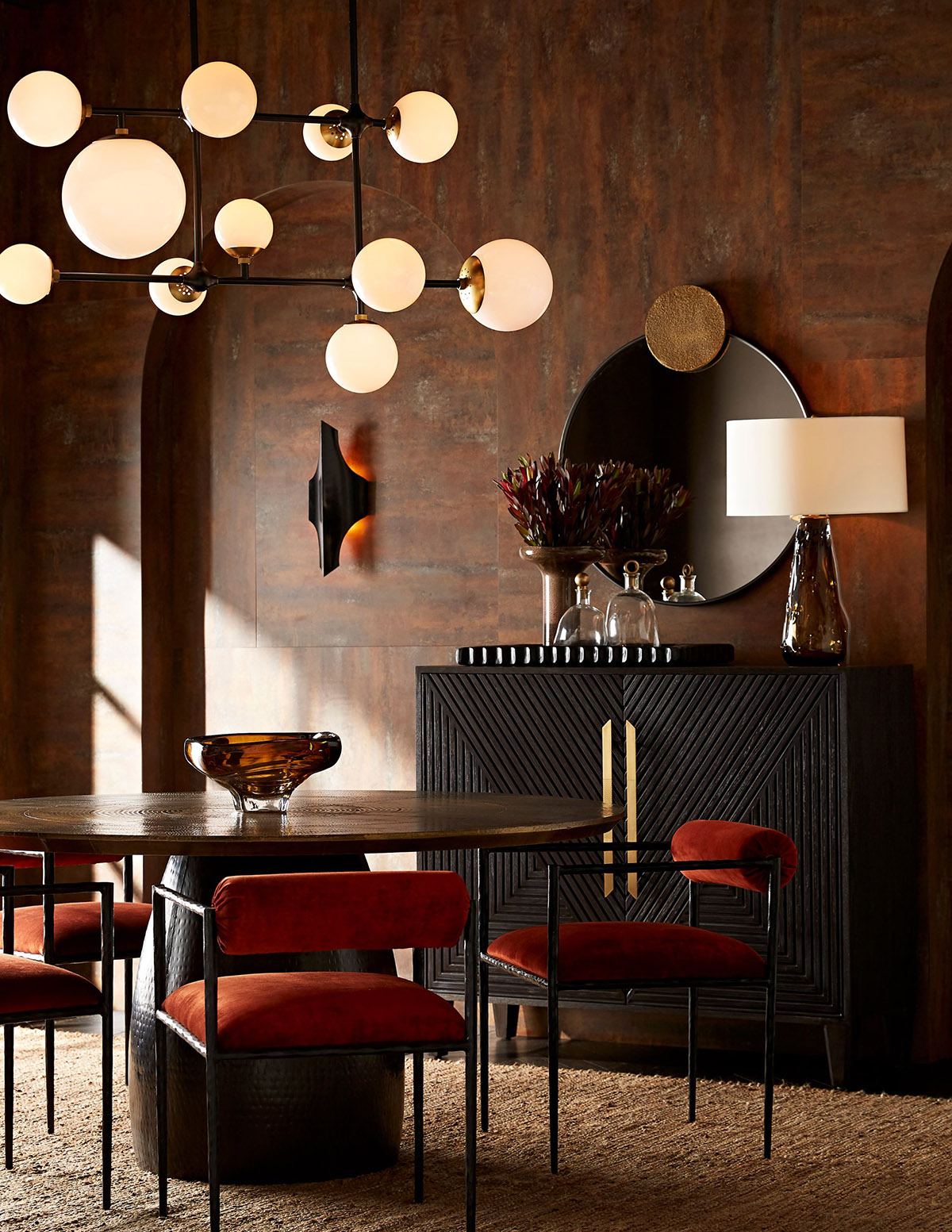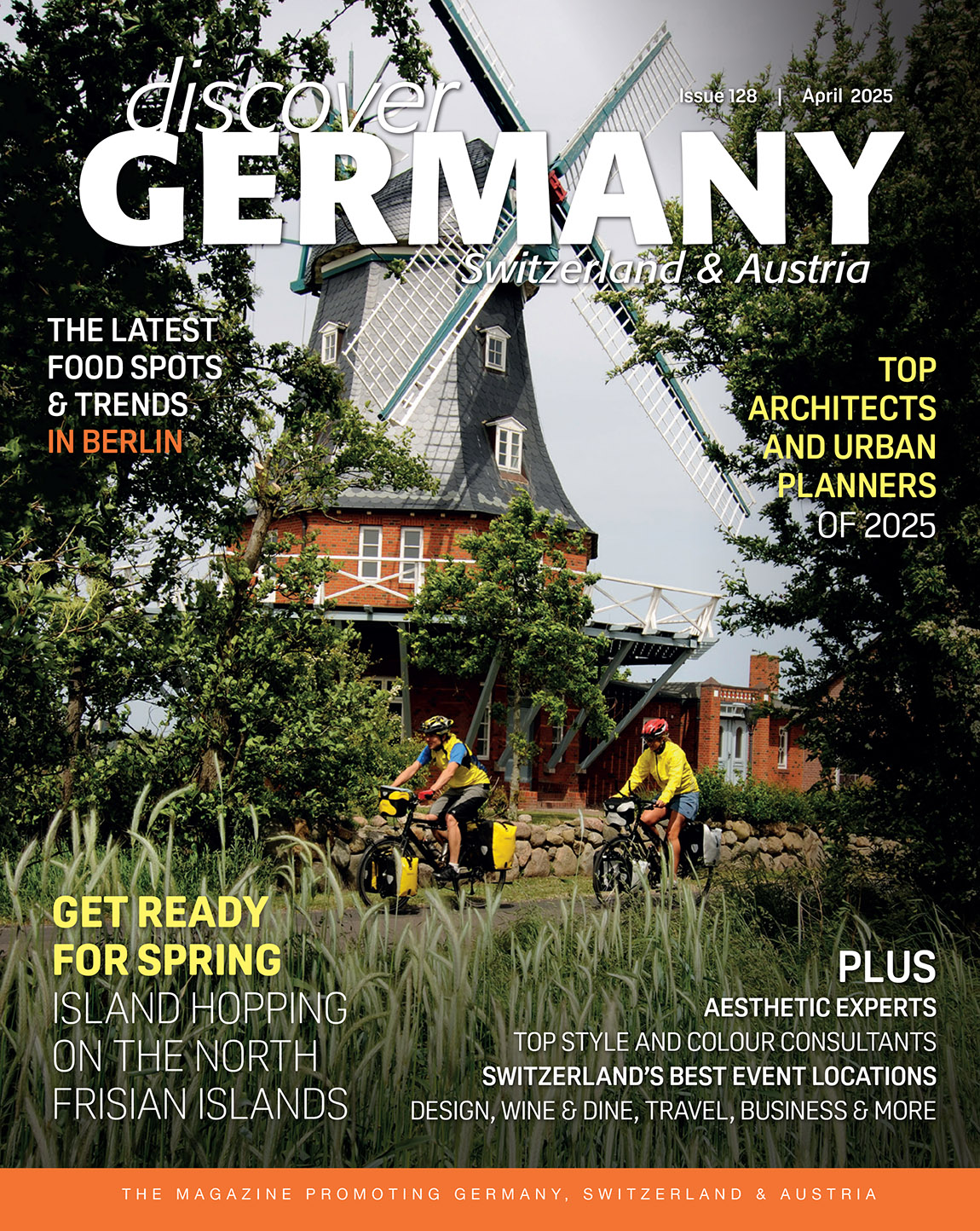FORAGING FOR SUPERFOOD – A HIKE THROUGH THE ALPS
TEXT : C.C. SCHMID | TRANSLATION: NANE STEINHOFF
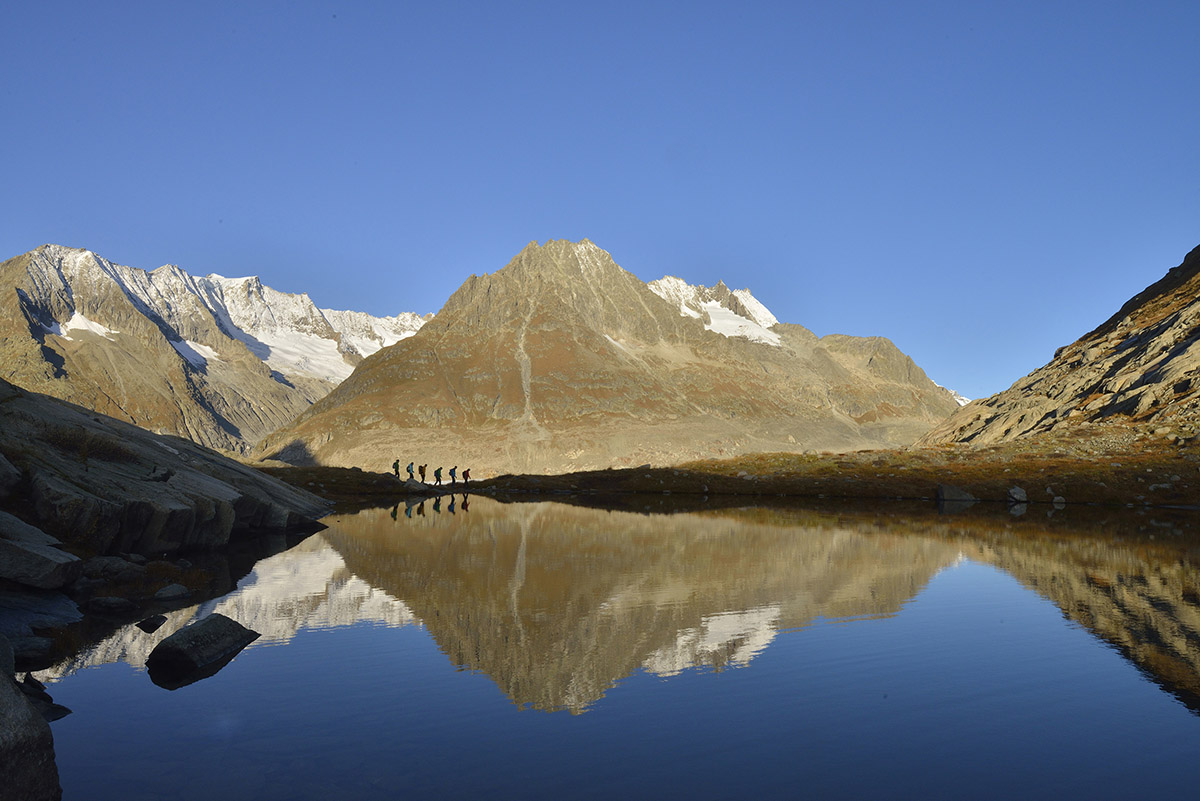
Elderberry, rosehip and barberry thrive bountifully on the slopes of the Swiss Aletsch Arena. The plentiful wild bushes are a veritable grocery store and pharmacy all in one: in autumn, their fruits can be used to make fine jams, juices or even spaghetti sauce – full of vitamins and other health benefits. Isabella Albrecht, from the Pro Natura Centre Aletsch, shares her favourite places for foraging on a wonderful hike through the Valais autumn landscape. (And as an aside: many of these treasures may also be found in your area, too!)
We have to warn you: once you have started, you soon will not be able to go past a rosehip hedge, an elderberry bush or a hawthorn without picking at least a handful of fruit or a few leaves. Walks can sometimes drag on… but when you get off the cable car in Ried-Mörel on a late September morning and see the sun, you will wish that this day would last forever. The air carries that faint breath of early autumn, but otherwise, here in Valais, the late summer is still in full swing on the southern slopes as you look down into the valley of the young Rhone. Isabella Albrecht makes an appearance along with a basket and walking stick and one wonders what the cheerful and youthful-looking biologist might want to do with the latter. She laughs and explains: “If a branch that I want to pick something from is out of reach, I’ll bring it closer with the stick.”
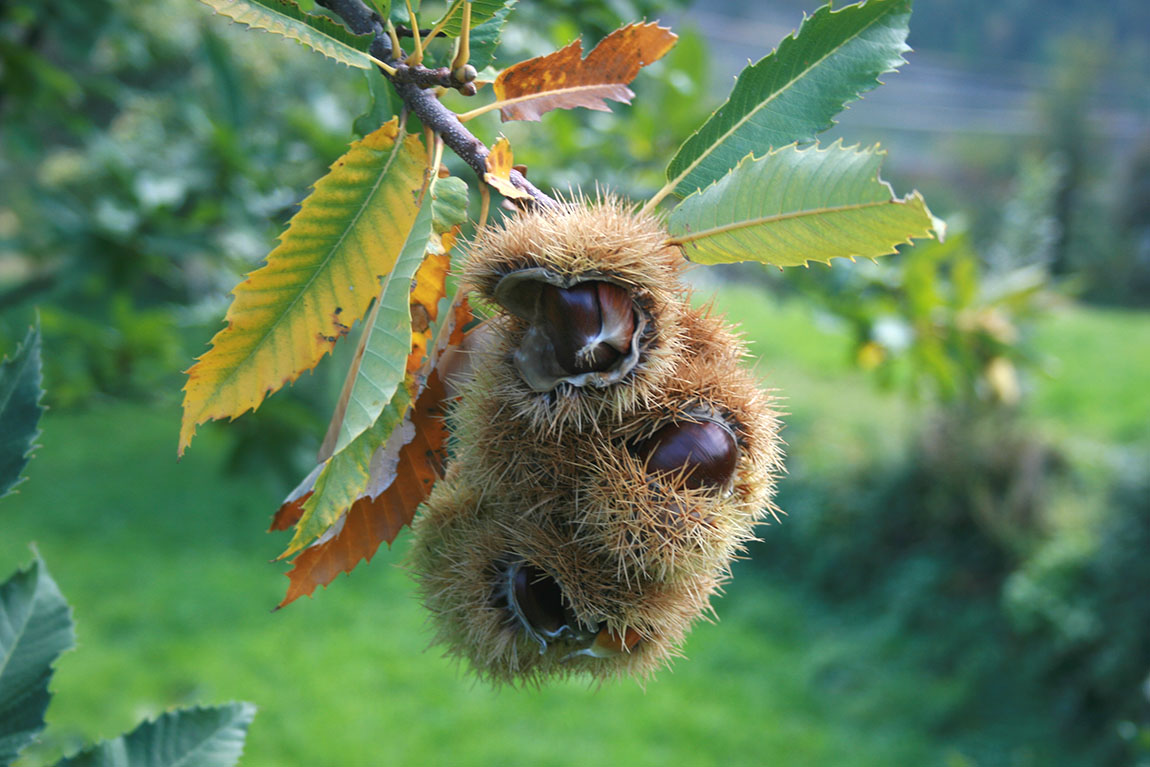
Photo: Alban Albrecht.
We start walking, down a wide staircase, past the school building towards the church. On the other side of the valley, the imposing peaks of the Valais mountains scratch the deep blue sky, while Isabella raves about the intense aroma of the wild fruits and about having these nutrient- and vitamin-rich treasures on your doorstep. She speaks almost reverently about this gift that nature blesses us with every year – and we are already standing in front of an old stable made of sun-burned larch wood, in front of which a beautiful elderberry bush grows. The panicles, which in spring still bore delicate, white flowers (the scent of which is now in the form of a delicious syrup on Isabella’s storage shelf), hang full of deep-black berries. “They are bursting with vitamin C and dark plant pigments and thus give the immune system a lot of support,” says Isabella. “If children have a lot of colds, they should get a spoonful of juice every day in winter.” We carefully pick a few panicles – never too many from one bush – and continue walking.
As the asphalt road turns into a narrow path, we come across the first whitebeam tree, whose leaves, with their grey-felt undersides, shine in the sun. Its fruits are tiny apples, which are just one centimetre in diameter, and Isabella likes to cook them with a little apple juice to make a puree that she later passes through a wide-meshed sieve. “It tastes wonderful on bread and butter,” she says with a smile.
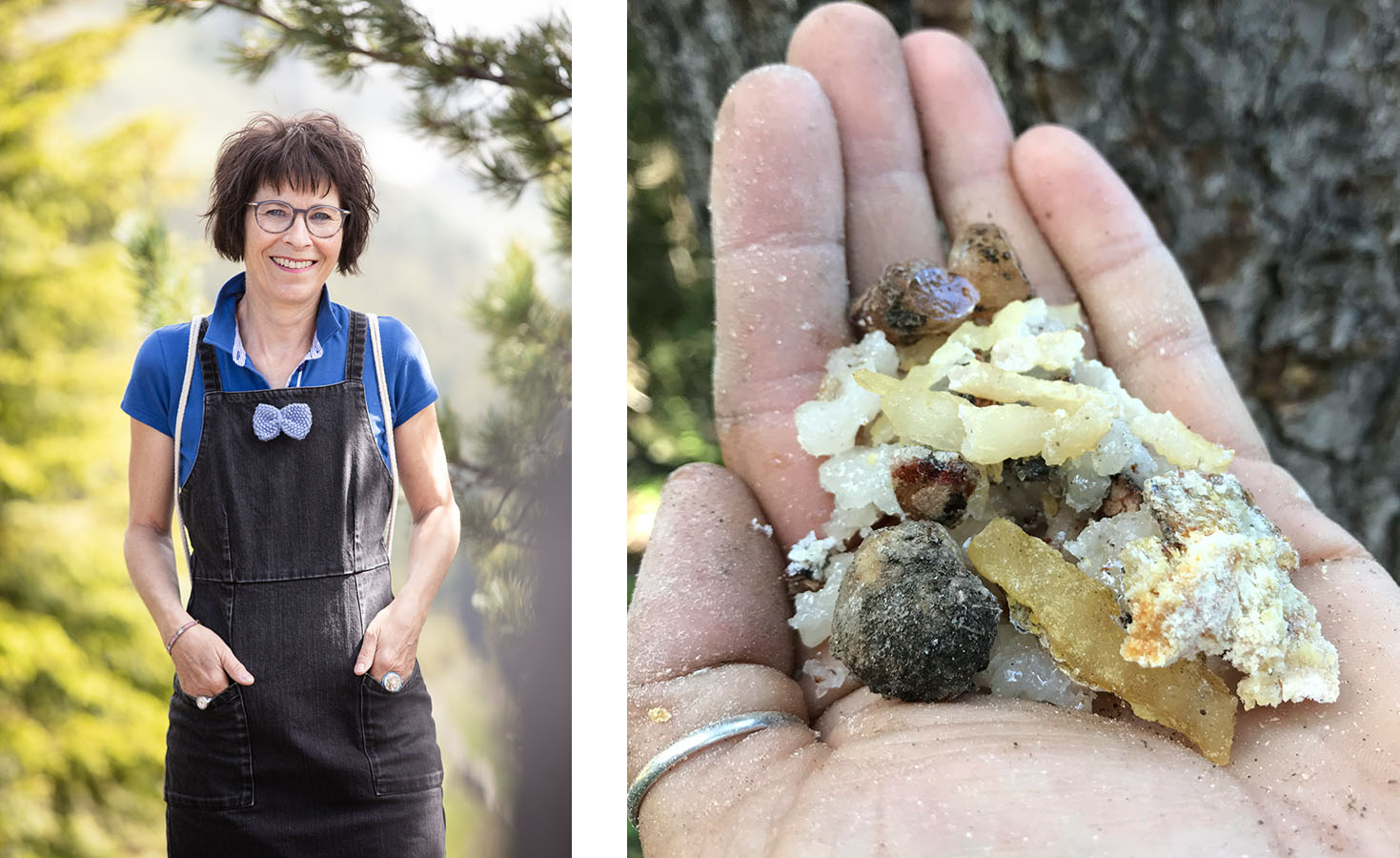
Left: Isabella Albrecht. Photo: Pascal Gertschen. Right: Photo: Stefanie Mattig
The path leads us between isolated deciduous trees – many ash trees and maples are there – down to a dry south-west slope, from which a dusty scent of hay still rises at this time of the year. The most varied sorts of “rose apples”, as Isabella calls rosehips, grow here, and are true miracles in producing vitamins A, B and C. “In spring, you can see everything from pink to pale pink to snow white, and there are just as many different fruits in autumn. However, only the smooth specimens are edible,” reveals the expert. She strongly recommends wearing long sleeves when collecting the fruit, which she simply boils in water for an hour without having to laboriously dispose of the “itching powder” inside and then passes through a “passe-vite” with a very fine sieve plate. The little hairs from the fruit remain in the sieve and the resulting pulp is even used by the adventurous Isabella as a base for pasta sauce instead of cooked tomatoes, or she cooks the pulp with lemon juice and sugar to create a fine jam.
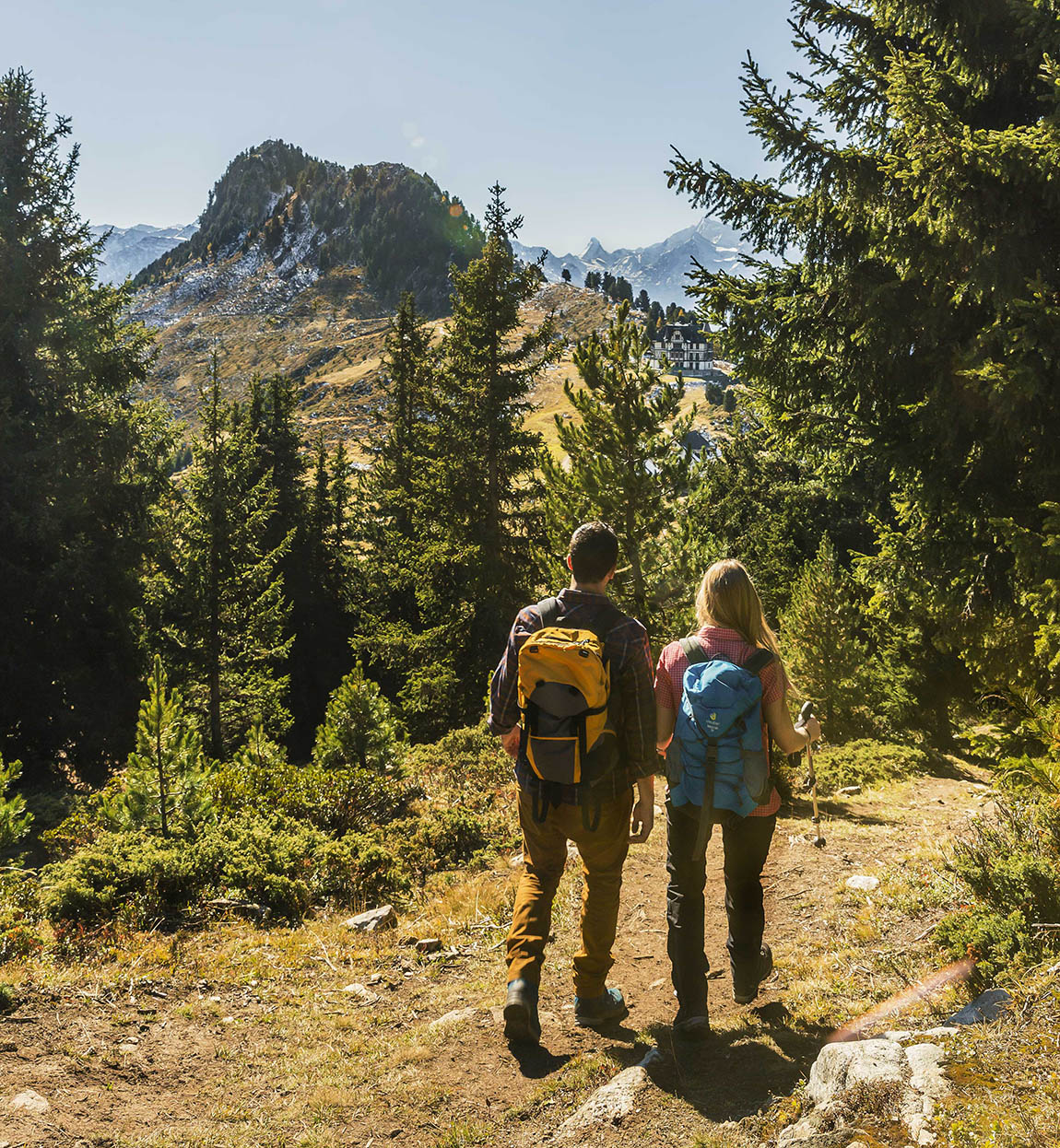
Photo: aletscharena.ch
An old wooden gate and a small bridge further along is a path that first leads uphill and then downhill again, partly secured with ropes. Isabella shows us barberries – her favourite wild fruit – in a light forest of ash, whitebeam, birch and oak. She prefers to eat the elongated red berries, which contain potassium as well as vitamin C, as jam – boiled down with pear and acacia honey – or dried, as in the Middle East (barberries are the food of the Berbers).
Towards the end of our way down into the valley lies something of a magical chestnut grove. The Selve, which was overgrown for a long time before eventually being restored a good 15 years ago, with its dry-stone walls and wild bushes, is a place of particularly great biodiversity: in 1969, many different species of plants and animals were counted within just one square kilometer. In addition to barberry and rosehips, hawthorn and sloe peek out from the hedges, and of course Isabella also has a lot to tell us about it. The hawthorn, the home of the good fairies, is excellent for the heart, and it’s also the shrub through which Sleeping Beauty fell into her 100-year sleep. The flesh of the fruit is sweet, its skin tart, and after we have tasted a sample fresh from the tree, we set off with our harvest down to Mörel. From here, the cable car floats up to Riederalp, where, for once, we won’t spend the evening on the terrace, but in the kitchen of our holiday apartment – cooking the whitebeam and rosehip jam.
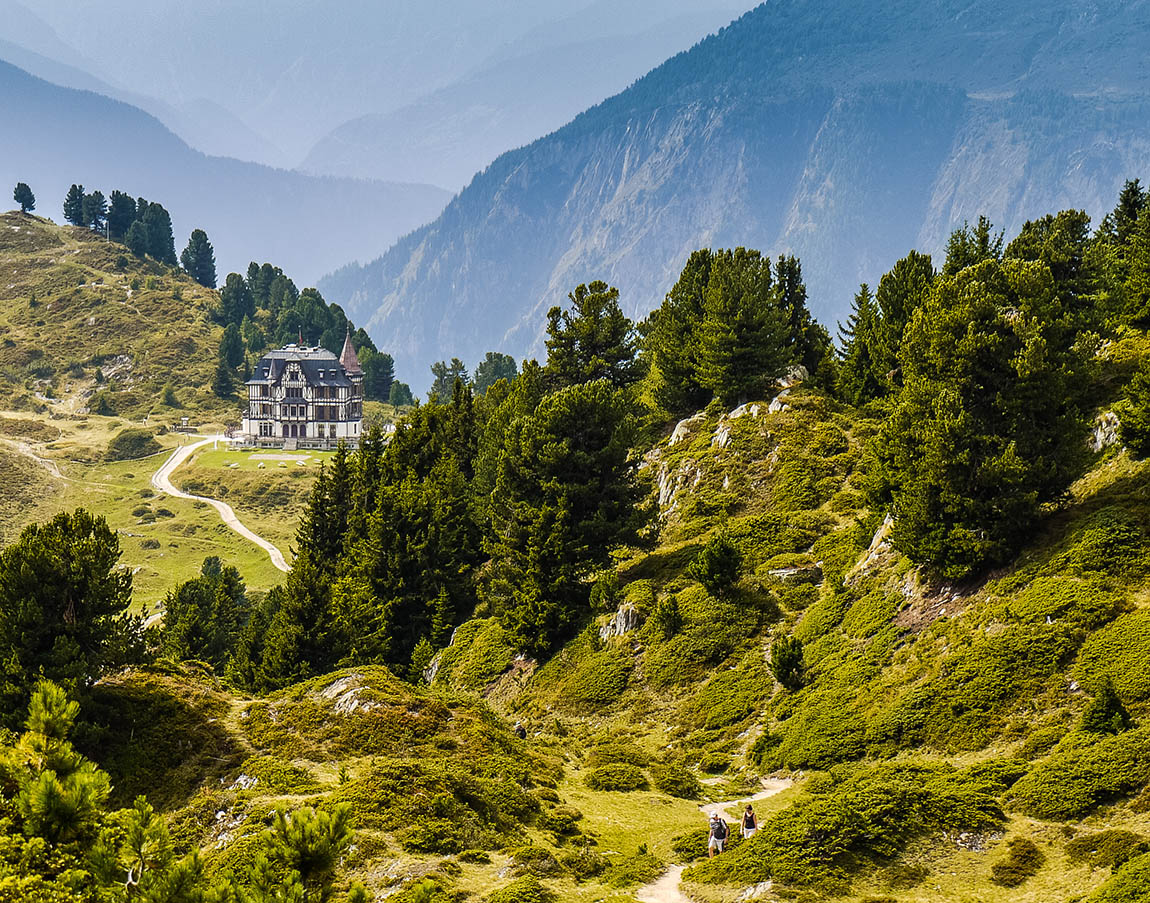
Photo: Robert Hansen
The little guide to wild fruit picking
- Only collect the fruits that you know
- Only take a few fruits from each plant, never harvest plants completely empty
- Always take only as much as you can process
- Some fruits are inedible raw (elderberries, for example, contain sambunigrin, which only disintegrates when heated)
- Always wash the fruit before processing
For more information, visit:
https://www.aletscharena.ch
Subscribe to Our Newsletter
Receive our monthly newsletter by email


